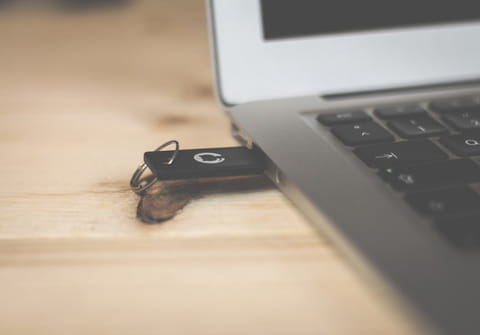Create a bootable USB drive

This FAQ will show you how to create a bootable USB drive to install Windows 7, Windows Vista, Windows 8, and Windows 10.
This sort of drive is especially useful for mini laptops that don't come with a disc reader, and it enables you to finish the download process slightly more quickly. For this process, you will need your Windows disc ISO, a USB stick of about 4 GB, and a program called Windows 7 USB/DVD Tool.
How to create a bootable USB drive for Windows 10?
Start by connecting the USB drive to your PC, and open Disk Management by right-clicking Start > Disk Management.
Now, you will need to format the partition. To do this, right-click the USB drive partition, and select Format. Choose the FAT32 file system to be able to startup either BIOS-based or UEFI-based PCs. Finally, set the partition as active by right-clicking the USB drive partition and clicking Mark Partition as Active.
N.B. If the Mark Partition as Active option isn't available, you can use diskpart to select the partition and mark it active manually.
Now, use File Explorer to copy and paste the contents of the Windows product DVD onto the USB flash drive.
Next, connect the USB flash drive to a new PC, turn on the device, and press the key that opens the boot-device selection menu for the computer (i.e. Esc/F10/F12 keys). Select the option that boots the PC from the USB flash drive, then, follow the instructions to install Windows.
Note: Before booting your USB drive, don’t forget to download the ISO file of Windows 10 on your pen drive.
How to create a bootable USB drive for Windows 8?
The following method applies to Windows 8.
1. Start up the software from the shortcut on your desktop, and click Browse.
2. In the window that opens, navigate to the folder where you have saved your ISO file, select it, then click Open > Next > USB device.
3. Select your USB drive from the drop-down menu, and click Next. The program will then get to work on formatting your USB drive.
Note: read more about how to download and install Windows 8.
How to create a bootable USB drive for Windows 7 and Vista?
The following method applies to both Windows 7 and Vista. Before beginning, plug in your USB drive and save its contents because the key will be formatted.
- Now, open the Command prompt, and type Run > CMD.
- Then, type the following commands: DISKPART > List disk > Select disk [your USB key disc number] > Clean > Create partition primary > Active > Format fs=fat32 quick > Assign (to assign a letter to your USB drive) > Exit (to exit diskpart) > Exit (to exit the Command prompt).
How to create a bootable USB drive for Windows XP?
With CD
If you have Windows XP on a CD, insert your Windows XP CD into the CD ROM drive and click Browse.
- Enter the destination path on the PC
- Select your CD ROM with the Windows XP in and click OK
- Click Refresh and then go to the small arrow just to the left and select the USB key that you used to boot XP
- Select Fixed
- Click Go to begin the procedure
- Once the process is complete, close the program.
Without CD
If you don't have the Windows XP CD, you will need to download the Windows XP installer run the software and follow the installation wizard. At the very end of the installation, the software will launch.
Installing Windows XP
- Connect the USB key to your computer and enter the BIOS
- Set your BIOS to boot the PC from the USB key
- Once done, save and restart your PC
- Here, you'll have two lines in the GRUB menu
- The first is to select the startup of the installation procedure
- The second line will be for the rest of the installation and the first boot of Windows XP
- Therefore boot on the USB key until Windows XP is fully installed
- Follow the installation instructions as for a normal installation

